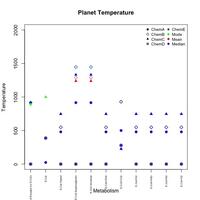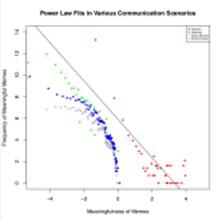Admission CTAs
From Genetic Networks to Planetary Atmospheres
One of the main questions in astrobiology and exoplanetary science is how the evolution of a potential biosphere and atmosphere or the environment of that planet are affecting each other, and how they are co-evolving into an integrated, stable, complex system (Cabrol, 2016). Since we have evidence only from Earth regarding planetary biosphere and atmosphere, one useful way to tackle this problem is through computer simulations, such as agent-based models, Monte Carlo simulations and many more.
Particularly in the case of large scope problems, one of the main tasks is finding specific, smaller scope research that can already shed light on specific parts of the problem, but then aligning these many pieces of the puzzle in an integrated, coherent way. Part of this work started at NASA/SETI Frontier Development Lab during the summer of 2018, when a team of data scientists and astrobiologists started to narrow down on the question: “What is universally possible for life?” (FDL, 2018). One avenue for focusing down on this problem has been to connect and meaningfully align the work that has been done on generating and understanding metabolic networks and synthetic genomes with the work on simulating atmospheric gases and temperatures.
One way these metabolic network simulations have been developed is using Monte Carlo simulations and a binary encoding of the E. coli genome (Libby, 2018). We took this simulation to generate synthetic E. coli genomes, which can hypothetically feed on not only the usual chemicals that the organism needs to survive on Earth, but also on chemicals that are specific to greenhouse gases, such as CO2, O2, CH4. H2 and H2O. These metabolic networks are characterized by network probabilities of the connections of the chemicals that are being used to generate these specific metabolic and genomic networks. On another hand, we generated several simulations of the planetary temperatures and albedos using the ExoGaia agent-based simulation (Lenton, 2018), by adjusting the chemistries of the planets with the probabilities given by the metabolic networks of the modified synthetic E. coli. In this fashion, we were able to connect the metabolic, micro level networks of chemistries with the atmospheric, macro level networks of planetary albedos and temperatures (see Figure 1 left).
Figure 1. Left: The connection of genetic metabolisms and planetary temperatures based on different chemistries; Right: The selection of adaptive peer-to-peer interaction from noisy data.
Another way computational methods can help steer some of the approaches into Astrobiology is through simulating peer-to-peer interactions and the evolution of entities from singular to collective entities, from biological and chemical interactions to organism-to-organism interactions (Berea, 2018). These simulations can show under which scenarios the peer-to-peer interactions can develop adaptability and convergence among entities and extract these meaningful scenarios from otherwise a large amount of noisy simulated data (see Figure 1 right). In a way, we can view interactions as the mezzo or medium level types of interactions in a biosphere.
In the future, we are hoping to include into these co-evolutionary types of simulations the individual level peer-to peer interactions, to bridge the genetic metabolic networks to the planetary atmospheres not only based on chemistry but also based on biology, thus enriching our view and understanding of how a planetary ecosystem evolves.
References:
[1] Cabrol, N. A. (2016). Alien mindscapes—a perspective on the Search for Extraterrestrial Intelligence. [2] Lenton, T. M., Daines, S. J., Dyke, J. G., Nicholson, A. E., Wilkinson, D. M., & Williams, H. T. (2018). Selection for Gaia across multiple scales. Trends in ecology & evolution.
[3] Berea, A. (2018). Emergence of Communication in Socio-Biological Networks. Springer International Publishing. [4] Libby, E. (2018).
[5] NASA Frontier Development Lab. (2018).


